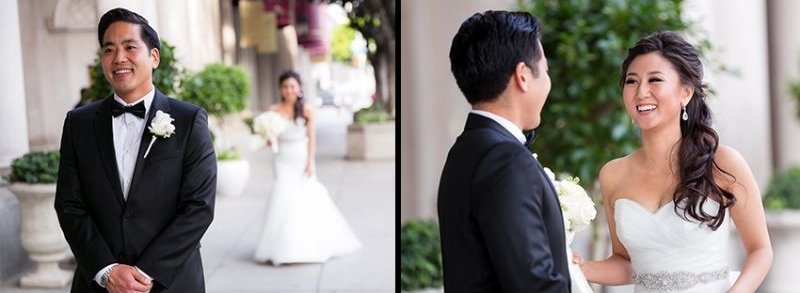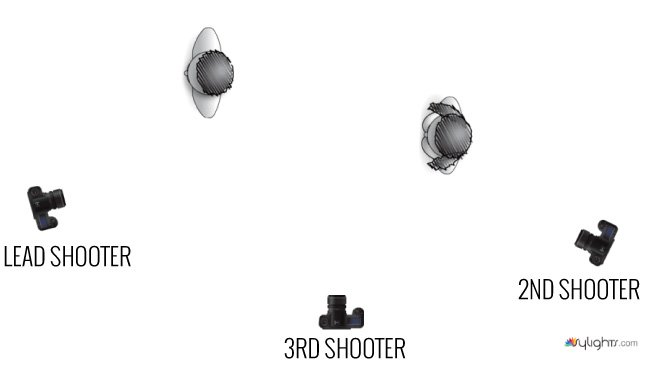
Second Shooter Training | First Look
For the first look, the second shooter is responsible for getting the groom in place. It’s absolutely critical that you call the lead shooter prior to leaving the groom’s suite to ensure that the bride and groom don’t accidentally see each other. As you walk to the predetermined location, make sure you’re walking ahead of him so that you can stop him if the bride happens to be close by.
Once you arrive at the location of the first look, face the groom away from where the bride will be walking and continue with a few more basic portraits of him. The first look location will almost always be a spot with soft, flattering, light. If there are delays with the bride’s arrival, you might be waiting for a while, so make the most of every moment.
It’s also your responsibility to explain the situation to the groom and get him excited and prepared for the moment.
Remind him to ignore the photographers as much as possible and focus on her. Remind him that this is a “once in a lifetime” moment when he’s going to see his future bride for the first time on their wedding day. The more emotion you can get out of him, the better the photos will turn out. When the bride and the lead photographer arrive at the first look location, switch places with the lead photographer, as the lead will be taking the main position as pictured below:
Lead Shooter’s Position
The second shooter will be on the other side, capturing the guy’s expression as he turns around. Here are some examples:
Second Shooter’s Position
Second Shooter’s Position
As a team you’ve now successfully captured both perspectives, which look great on spread in albums or on blogs:
Combined Images
Combined Images
Shooting Positions and Lenses
Keep in mind that with any scene you want to stay out of each other’s shots. The easiest way to think of this is a letter “V,” where the lead shooter is one tip of the “V,” the couple is the center of the “V,” and the second shooter is the other tip of the “V.” See the diagram below for more clarification. If you have a third shooter, have them get the side view of the two coming together.
The lead and second shooters should be on their Sony 70-200mm f/2.8 lenses (or Canon Equivalent), while the third should be on a Sony 24-70mm f/2.8 lens (or Canon Equivalent).
Note: Be sure to play nice with the video team. Check out their crops and remain out of their frame as well. Also, coordinate and stay on the same sides as they are.






